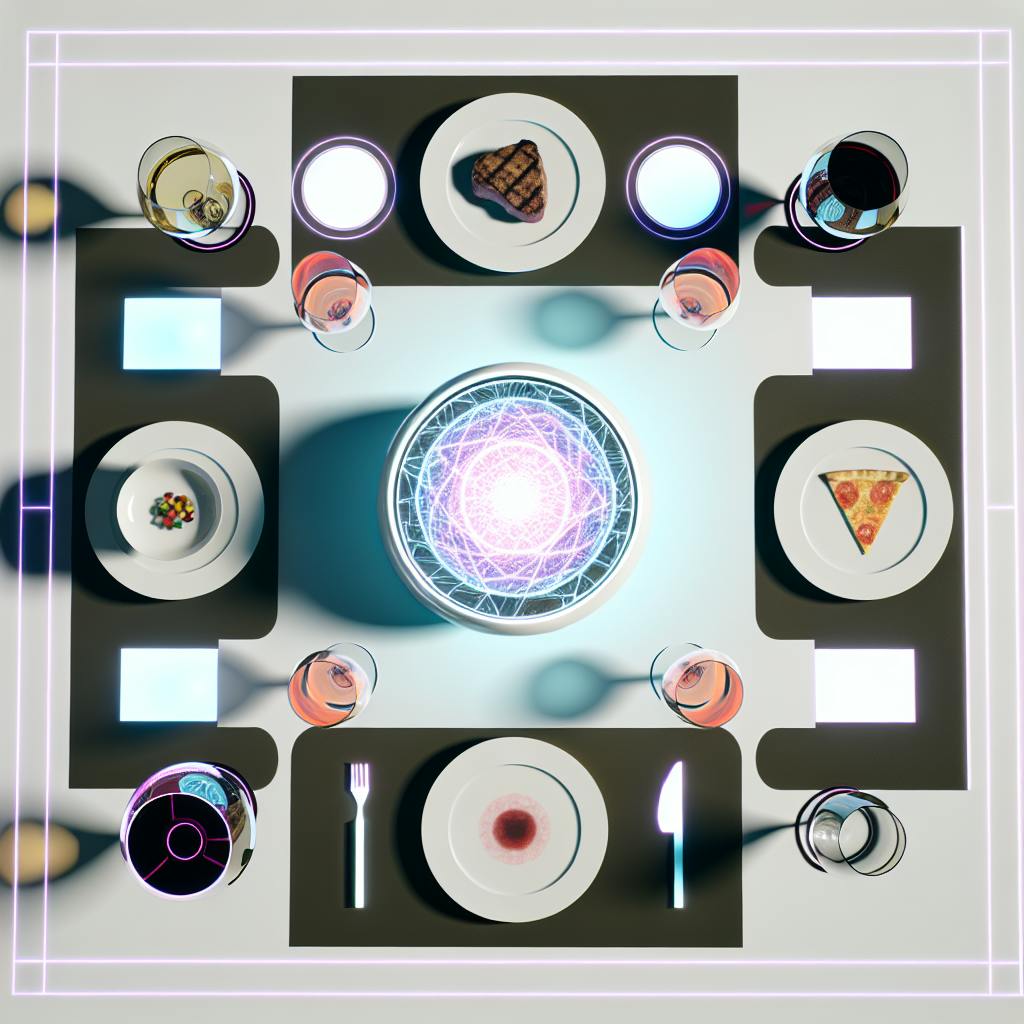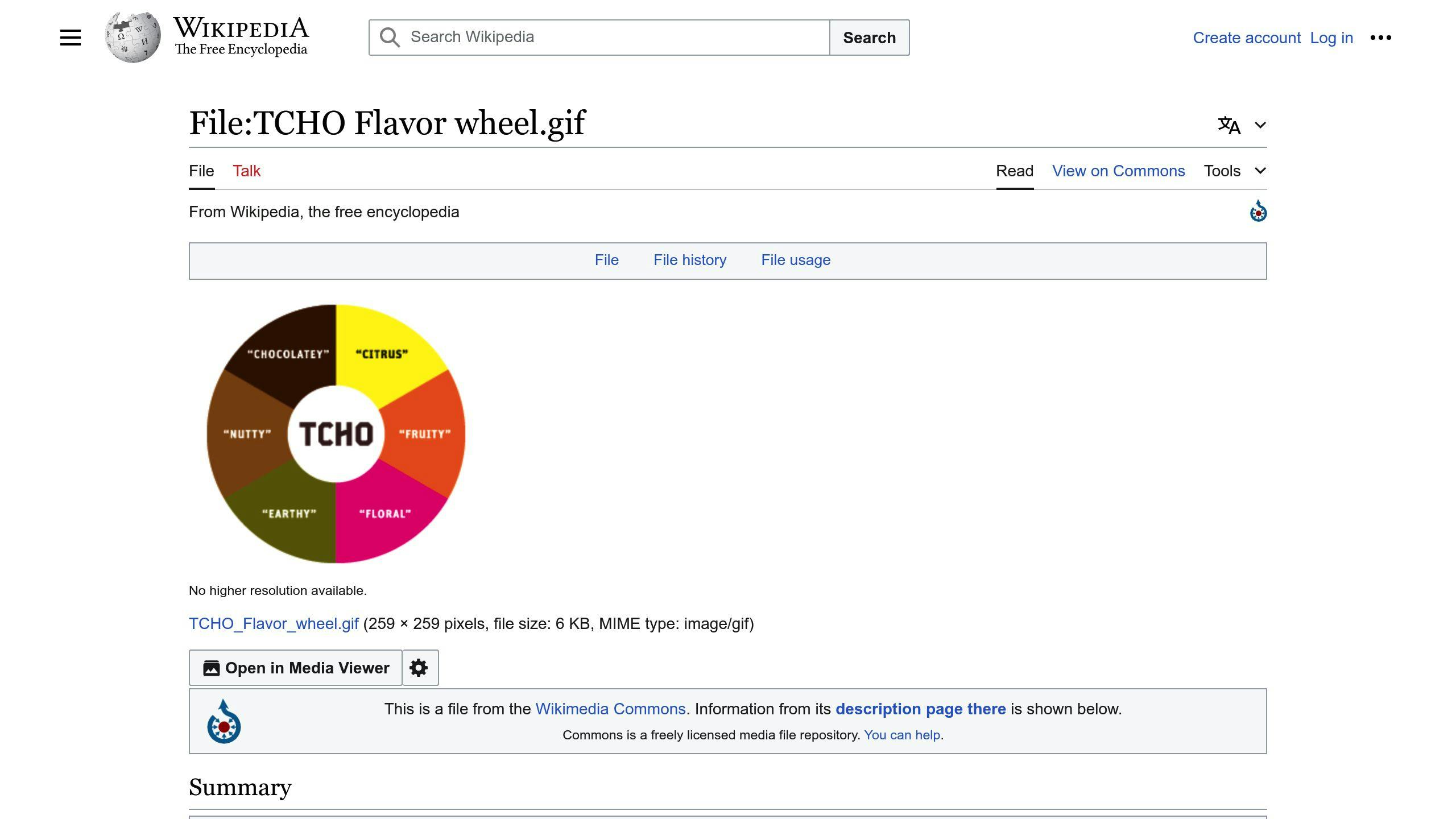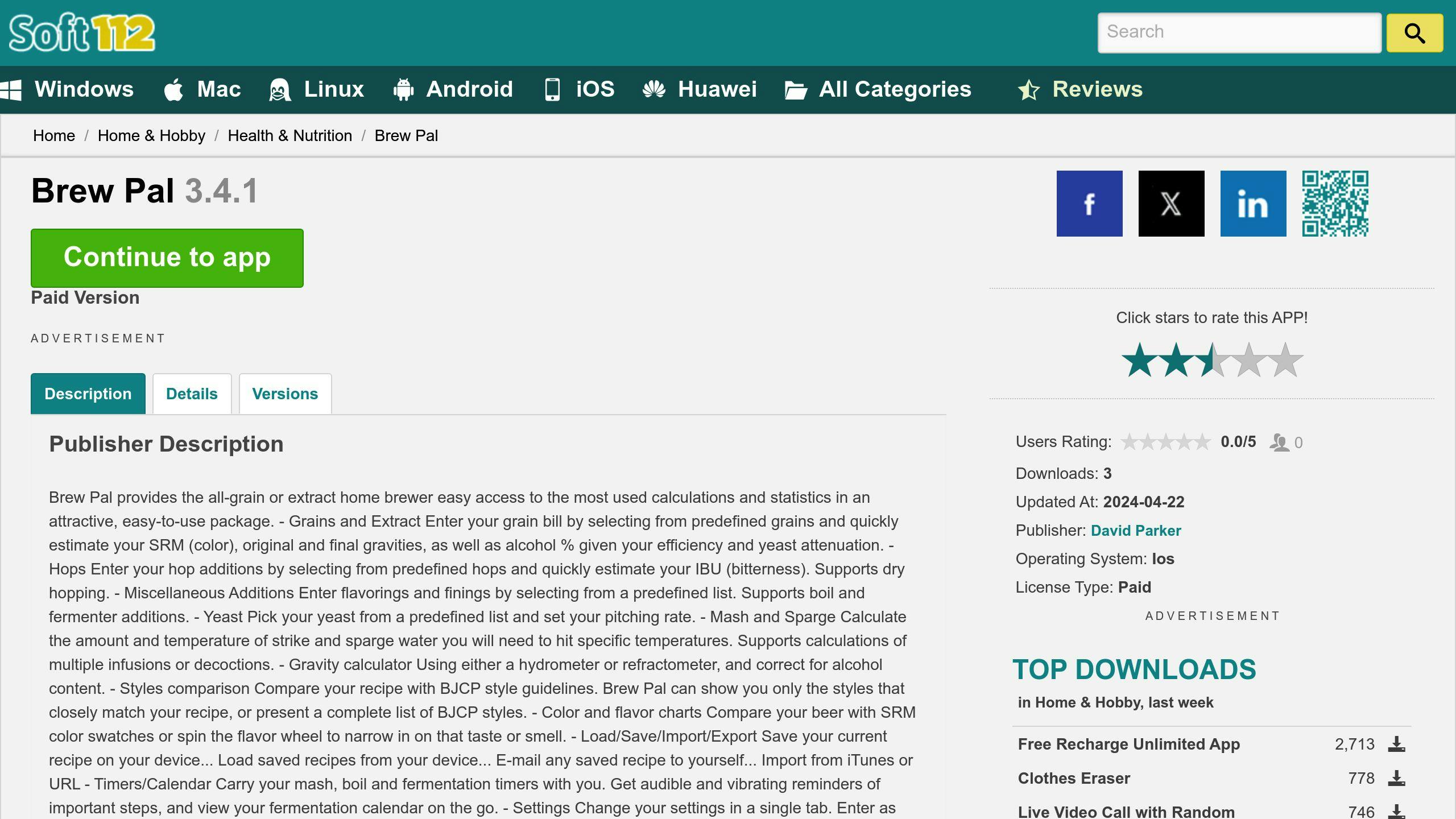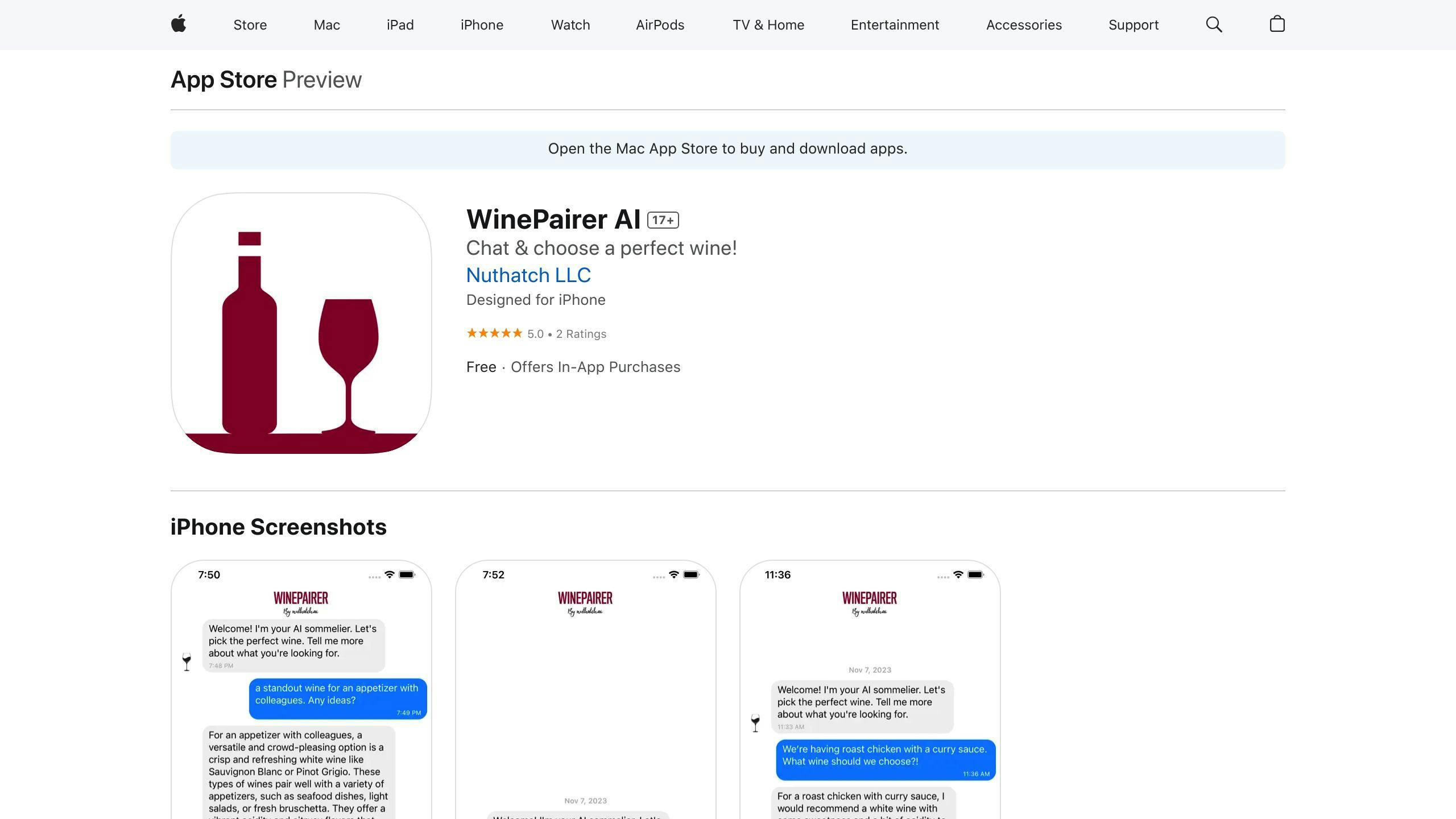May 15, 2024

AI food and drink pairing uses artificial intelligence to suggest perfect meal and drink combinations, revolutionizing the culinary industry. By analyzing vast data on flavors, ingredients, and cooking techniques, AI systems identify complementary flavor profiles that enhance the dining experience.
Benefits of AI Food Pairing
How AI Pairing Works
ConceptDescriptionFlavor WheelCategorizes flavors into primary, secondary, and tertiary categoriesContrasting FlavorsPairings that contrast flavors, creating excitement (e.g., sweet and sour)Harmonizing FlavorsComplementary flavors that meld seamlessly (e.g., tomatoes and basil)UmamiSavory or meaty taste that enhances overall flavor profile
AI Tools for Pairing
ToolDescriptionAI SommeliersAnalyze wine's chemical composition to suggest food pairingsAI GPTsUse natural language processing to generate personalized pairing suggestions
Benefits for Restaurants
Real Examples
Challenges to Consider
The Future of AI in Dining
By integrating AI food pairing, restaurants can create memorable dining experiences, increase customer satisfaction, and stay ahead of the competition in the ever-evolving culinary landscape.
Flavors are a combination of taste, aroma, and sensation. When we eat, our taste buds detect chemical compounds in food, which our brain interprets as specific flavors. Understanding how flavors work together is crucial for creating harmonious pairings.

The flavor wheel is a tool used to categorize flavors into primary, secondary, and tertiary categories. This wheel helps chefs and food enthusiasts identify complementary flavors and build balanced profiles.
Flavor CategoryDescriptionPrimary FlavorsSweet, sour, salty, bitterSecondary FlavorsUmami, fatty, astringentTertiary FlavorsSpecific aromatic compounds found in various ingredients
Flavor pairing often involves contrasting and harmonizing flavors. Some pairings work because they contrast flavors, creating excitement and intrigue. Others harmonize, creating a seamless and balanced taste experience.
Umami is often described as a savory or meaty taste. Ingredients rich in umami, such as mushrooms, soy sauce, and Parmesan cheese, can enhance and deepen the overall flavor of a dish.
By understanding how flavors work together, we can create harmonious and balanced pairings that elevate the dining experience. In the next section, we'll explore how AI tools can help us identify these perfect pairings.
AI-powered food pairing has become increasingly popular in recent years, with many restaurants and food establishments leveraging these tools to create unique and harmonious pairings. These AI tools analyze vast amounts of data, including flavor profiles, ingredient combinations, and culinary traditions, to suggest pairings that would otherwise be difficult to discover.
AI sommeliers use machine learning algorithms to analyze the chemical composition of wines and pair them with complementary dishes. These AI sommeliers can identify flavor compounds and predict how they will interact with different ingredients, resulting in expertly curated pairings.
AI SommelierDescriptionIBM's AI SommelierAnalyzes wine's chemical composition to suggest pairingsAnalytical Flavor SystemsUses machine learning to identify flavor compounds and predict pairings
AI GPTs (Generative Pre-trained Transformers) use natural language processing to analyze recipes, flavor profiles, and culinary traditions, and generate personalized pairing suggestions. They can even suggest novel and unexpected pairings, pushing the boundaries of culinary creativity.
AI GPTDescriptionBeer ExplorerAnalyzes recipes and flavor profiles to suggest beer pairingsLe ChefUses natural language processing to generate personalized food pairing suggestions
The use of AI tools for meal and drink matching offers several benefits for restaurants and food establishments. These benefits include:
In the next section, we'll explore the benefits of AI food pairing for restaurants and food establishments in more detail.
Integrating AI-powered food pairing into restaurants offers numerous advantages. By leveraging AI's capabilities, restaurants can create unique pairings, increase customer satisfaction, and enhance the overall dining experience.
AI analyzes sales data, customer preferences, and ingredient availability to suggest pairings that are not only delicious but also cost-effective. This results in:
AI identifies emerging trends and suggests pairings that are likely to appeal to customers. This enables restaurants to:
AI automates tasks such as menu planning, inventory management, and supply chain logistics. This frees up staff to focus on:
BenefitDescriptionUnique PairingsAI creates unique and harmonious pairingsIncreased Customer SatisfactionAI increases customer satisfaction and loyaltyEnhanced Dining ExperienceAI enhances the overall dining experienceStreamlined Menu DevelopmentAI streamlines menu development and reduces food wasteStaying Ahead of TrendsAI helps restaurants stay ahead of culinary trendsImproved Operational EfficiencyAI improves operational efficiency
By leveraging these benefits, restaurants can revolutionize their operations, increase customer satisfaction, and stay ahead of the competition. In the next section, we'll explore real-life examples of AI-powered food pairing in action.
AI-powered food pairing is no longer a concept, but a reality that many restaurants have successfully implemented. Here are some real-world examples of restaurants that have leveraged AI pairing systems to enhance their customers' dining experiences.

BrewPal, an AI-powered app, helps users find the perfect beer and food pairing. By analyzing user preferences, dietary constraints, and previous culinary selections, BrewPal provides personalized recommendations for beer and food pairings.
FeatureDescriptionPersonalized RecommendationsAnalyzes user preferences and dietary constraintsBeer and Food PairingSuggests perfect pairings based on user input

WinePairer AI is an intelligent sommelier that offers personalized wine and food pairing recommendations. With its interactive AI-powered chat, tailored suggestions, and boundless culinary combinations, WinePairer AI has become a go-to solution for wine enthusiasts and restaurants alike.
FeatureDescriptionInteractive AI-Powered ChatProvides tailored suggestions and boundless culinary combinationsPersonalized Wine and Food PairingOffers expert recommendations based on user input
Imagine an AI companion that understands your dietary preferences, allergies, and past meal choices. This AI-powered personalized palate suggests dishes you'll love, recommends pairings, and even adjusts spice levels based on your feedback.
FeatureDescriptionDietary PreferencesUnderstands user dietary needs and restrictionsPersonalized Dish SuggestionsRecommends dishes based on user preferences and past meal choicesSpice Level AdjustmentAdjusts spice levels based on user feedback
These real-world examples demonstrate the practical application of AI-powered food pairing systems. By integrating AI into their operations, restaurants can create unique pairings, increase customer satisfaction, and stay ahead of the competition. In the next section, we'll explore the challenges that restaurants may face when implementing AI pairing systems.
When implementing AI food pairing systems, restaurants may face several challenges that can impact their success. It's essential to be aware of these potential issues and take steps to mitigate them.
AI-powered food pairing may lack the human touch. While AI can provide personalized recommendations, it may struggle to consider subjective aspects like cultural preferences, emotional factors, and personal beliefs. Human professionals, such as nutritionists or dietitians, can offer more comprehensive guidance and support.
AI algorithms rely heavily on accurate and up-to-date data. If the input data is incomplete, inaccurate, or outdated, it can affect the quality of the recommendations. Additionally, AI may not always be aware of an individual's current health status or unique circumstances, leading to suboptimal pairing suggestions.
AI-powered food pairing involves collecting and analyzing personal health data, which raises concerns regarding data privacy, security, and potential misuse. It's crucial to ensure proper safeguards are in place to protect user privacy and maintain transparency in handling data.
AI automation technologies may process order items from suppliers within preset parameters and predetermined settings, limiting the number of customization options available to guests. Similarly, AI forecasting tools may not account for unique customer preferences, which can vary depending on the season.
Challenges Summary
ChallengeDescriptionHuman ElementAI lacks human touch and subjective understandingData QualityInaccurate or outdated data affects recommendation qualityPrivacy and EthicsConcerns regarding data privacy, security, and misuseCustomization LimitationsLimited customization options due to preset parameters
By understanding these challenges, restaurants can take proactive steps to address them and ensure a successful implementation of AI food pairing systems. In the next section, we'll explore the future of AI in dining and how restaurants can stay ahead of the curve.
The integration of AI in the restaurant industry is transforming the way we dine and operate restaurants. AI is not just a trend; it's a game-changer that will continue to shape the industry's future.
One significant trend is the integration of AI-powered voice assistants in restaurants. This technology can:
AI technologies like robotics and automation are expected to play a more prominent role in restaurant operations, further streamlining processes and reducing human intervention.
To stay ahead of the curve, restaurants must leverage AI to:
By embracing AI, restaurants can achieve improved efficiency, customer satisfaction, and innovation.
The ongoing integration of AI into the restaurant sector promises a fundamental transformation of the dining experience and business operations. As technology continues to advance, the potential for AI in restaurants is vast, promising not only improved efficiency and customer satisfaction but also innovative dining experiences.
Integrating AI pairing technology into your restaurant can seem overwhelming, but with these simple steps, you can start offering personalized meal and drink pairing recommendations to your customers.
Determine where AI can make the most impact in your restaurant operations. This could be improving ordering processes, optimizing inventory management, or enhancing customer service.
Research AI tools and technologies available for restaurants. Consider factors such as scalability, functionality, ease of integration, and affordability.
Select a reputable AI vendor or partner with expertise in the restaurant industry. Evaluate their track record, customer reviews, and case studies to ensure they can deliver the solutions and support you need.
Work with your AI partner to customize solutions that fit your specific needs. Provide them with your menu, ingredient lists, and customer data to ensure the AI system can provide accurate and personalized pairing recommendations.
Educate your staff on how to use the AI pairing system effectively. This will ensure they can provide exceptional customer service and answer any questions customers may have about the pairing recommendations.
By following these steps, you can successfully integrate AI pairing technology into your restaurant, enhancing the dining experience for your customers and setting your business apart from the competition.
StepDescription1Identify areas for improvement in your restaurant operations2Research AI solutions and vendors3Choose a reputable AI partner4Customize AI solutions to fit your needs5Train your staff on the AI pairing system
Remember to take your time and carefully evaluate each step to ensure a successful AI pairing implementation at your restaurant.
The integration of AI in food pairing has the potential to transform the culinary industry. By analyzing vast amounts of data, AI can suggest perfect meal and drink matches, enhancing the dining experience for customers and setting restaurants apart from the competition.
BenefitDescriptionImproved Customer SatisfactionAI suggests perfect meal and drink matches, leading to increased customer satisfactionIncreased RevenueAI-driven food pairing can lead to new revenue streamsEnhanced Menu EngineeringAI helps restaurants create unique and harmonious pairings
By embracing AI in food pairing, restaurants can create memorable dining experiences that will leave customers coming back for more. As the industry continues to evolve, it's essential for restaurants to stay ahead of the curve and explore the possibilities of AI-driven food pairing.

Enter your information in the form to receive a call from Loman and place an order like a customer would!